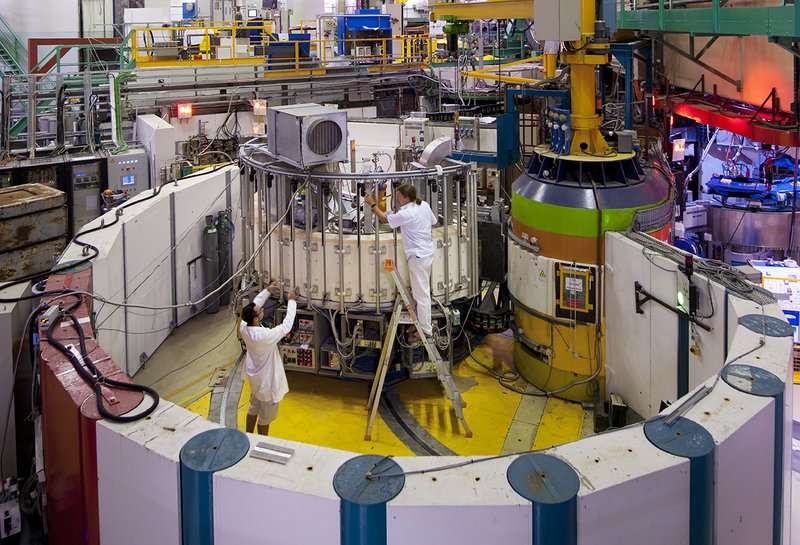Credit: ILL / Max Alexander
Iron-based superconductors contain layers of iron and a pnictogen – such as arsenic or phosphorus – or a chalcogen, like oxygen or selenium. Previously dismissed as weak candidates for superconductivity, iron-based superconductors took the science community by surprise when it was discovered that the new iron arsenide family had very high transition temperatures. Since then these high-temperature superconductors have become a hot topic of research, with neutrons and muons playing an essential role in investigating their unusual properties, in order to help quantum physics develop a theory behind high-temperature superconductive materials.
A team of researchers from the Tokyo Institute of Technology, Ibaraki University, the Institute of Materials Structure Science and the Graduate University of Advanced Studies (Japan) therefore joined forces to study the magnetic structure of iron-based superconductors at the Institut Laue-Langevin (ILL) in order to deepen their understanding of quantum materials.
At the world's flagship centre for neutron science, the research team used the D20 diffractometer to conduct a neutron diffraction experiment in order to study the magnetic structure of 154SmFeAsO1 xDx. D20 has a wide range of applications from thermodiffractometry, magnetism and kinetics to multi-stroboscopy, texture, highly absorbing samples, disordered systems and physisorption. As a very high-intensity 2 axis diffractometer equipped with a large position-sensitive detector, D20 gives scientists medium- to high-resolution information on very small samples, providing very precise values for the atomic and/or magnetic structure of the material. D20 can be applied to study crystalline solids, liquids or amorphous materials and their interactions with gases.
D20 allows scientists to conduct reproducible experiments with a perfect routine measurement. Its powerful neutron beam allows the observation of any condensed matter sample's diffraction pattern. A material with a magnetic order will display, in a neutron diffraction experiment, a diffraction pattern for its nuclear structure (arrangement of atoms) and magnetic structure (the arrangement of magnetic moments carried by some of its atoms).
In the study, the researchers synthesized samples of SmFeAsO1-xHx with different x variables at 1573 K (1300 C) and 5 GPa. They also prepared isotopically substituted samples 154SmFeAsO1-xDx in order to reduce large neutron absorbance of natural Sm.
After conducting the neutron diffraction experiment to obtain diffraction patterns of every sample, the scientists discovered a new antiferromagnetic (AFM2) phase in the electron-overdoped regime of 154SmFeAsO1-xDx samples with x ≥ 0.56, featuring a particularly high magnetic moment on the iron sites. The magnetic moment on Fe in AFM2 reaches 2.73 µb/Fe, which is the largest in all non-doped iron-based antiferromagnets reported so far. The theoretical calculations reveal that this is due to kinetic frustration.
Before this, heavy electron doping had been considered to reduce the electron correlation strength. However, in this study, heavy electron doping via indirect means enhances the electron correlation strength, yielding a new perspective on the properties of high-temperature super-conductive material. This will be important for the future of adapting doping within these superconductors to increase applications in the field.
More information: Soshi Iimura et al. Large-moment antiferromagnetic order in overdoped high-Tcsuperconductor154SmFeAsO1−xDx, Proceedings of the National Academy of Sciences (2017). DOI: 10.1073/pnas.1703295114
Journal information: Proceedings of the National Academy of Sciences
Provided by Institut Laue-Langevin























